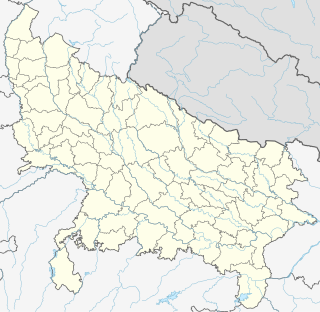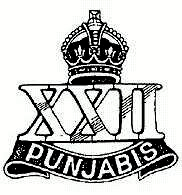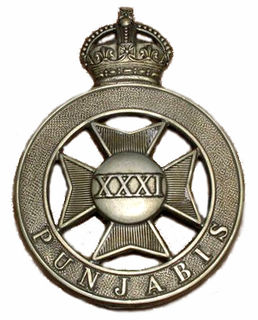Chronology
- 1779 raised at Chunar by Captain William Davis
- 1780? ranked as 34th Battalion of Bengal Native Infantry
- 1781 became the 27th Regiment of Bengal Native Infantry
- 1784 became the 30th Battalion of Bengal Native Infantry
- 1786 became the 30th Battalion of Bengal Native Infantry
- 1796 became the 2nd Battalion 8th Regiment of Bengal Native Infantry
- 1824 became the 24th Regiment of Bengal Native Infantry
- 1857 disarmed at Peshawar [1] 22 May

Chunar, located in Mirzapur District of Uttar Pradesh state, India, is an ancient town. The railway tracks passing through Chunar railway station leads to major destinations of India, including Howrah, Delhi, Tatanagar and Varanasi. National Highway number 7 also passes through Chunar. It is connected to Varanasi, the ancient and pilgrimage city also well known as Kashi or Benaras, by roads and rails. Chunar is well known for its pottery work, especially clay toys.

The regiments of Bengal Native Infantry, alongside the regiments of Bengal European Infantry, were the regular infantry components of the East India Company's Bengal Army from the raising of the first Native battalion in 1757 to the passing into law of the Government of India Act 1858. At this latter point control of the East India Company's Bengal Presidency passed to the British Government. The first locally recruited battalion was raised by the East India Company in 1757 and by the start of 1857 there were 74 regiments of Bengal Native Infantry in the Bengal Army. Following the Mutiny the Presidency armies came under the direct control of the United Kingdom Government and there was a widespread reorganisation of the Bengal Army that saw the Bengal Native Infantry regiments reduced to 45.

Peshawar is the capital of the Pakistani province of Khyber Pakhtunkhwa. Situated in the broad Valley of Peshawar near the eastern end of the historic Khyber Pass, close to the border with Afghanistan, Peshawar's recorded history dates back to at least 539 BCE, making it the oldest city in Pakistan and one of the oldest cities in the world. Peshawar was the capital of the ancient Kushan Empire, and was home to what may have been the tallest building in the ancient world, the Kanishka stupa. Peshawar was then sacked by the White Huns, before the arrival of Muslim empires. The city was an important trading centre during the Mughal era before serving as the winter capital of the Afghan Durrani Empire from 1757 until the city was captured by the Sikh Empire in 1818, who were then followed by the British in 1849.
In 1861, after the mutiny, the title was given to the 8th Regiment of Punjab Infantry which later became the 24th Regiment of Punjab Infantry. [2]

The Punjab Regiment is one of the oldest regiments still in service in the Indian Army, and is the most senior regional infantry regiment. It was formed from the 2nd Punjab Regiment of the British Indian Army in 1947 and has taken part in various battles and wars since, winning numerous honours for the same.

The 20th Duke of Cambridge's Own Infantry was a regiment of the British Indian Army. It was raised in 1857, as the 8th Regiment of Punjab Infantry. It was designated as the 20th Duke of Cambridge's Own Infantry in 1904 and became 2nd Battalion 14th Punjab Regiment in 1922. In 1947, it was allocated to the Pakistan Army, where it continues to exist as 6th Battalion The Punjab Regiment.












